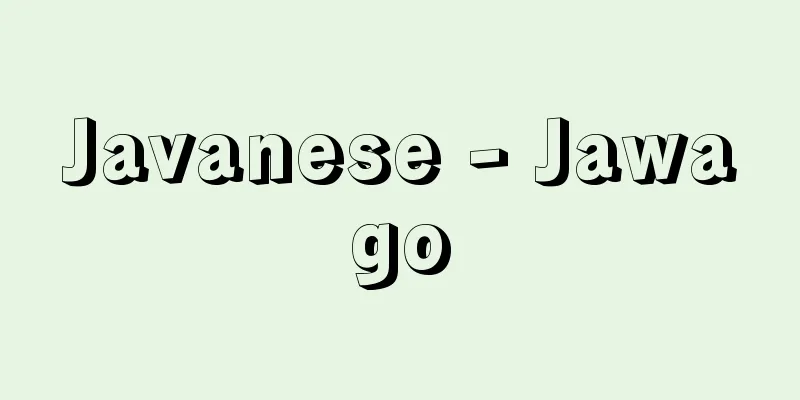Javanese - Jawago

|
It is a member of the Indonesian branch of the Malayo-Polynesian language family. It is spoken by over 50 million people, including immigrants from Indonesia, mainly in central and eastern Java, Suriname in South America, New Caledonia in the South Pacific, and Malaysia. There are inscriptions written in the South Indian Pallava script from the 8th century, and around the 10th century, adaptations of the two great Indian literary works, the Ramayana and the Mahabharata, were made, and these are important subjects of the modern-day folk art of wayang (shadow puppet theater). Known for its developed honorific language, it uses the basic levels of ordinary (nugoko) and respectful (kuromo), with intermediate (madio) between the two and the highest honorific (kuromo ingil), which shows the highest level of respect. Distinctions are made by personal pronouns (personal suffixes) and vocabulary (goi), with ordinary (superior) speaking to subordinates and respectful (inferior) speaking to superiors, but both ordinary and respectful forms are used between people of the same level. Among grammatical suffixes, only -aké (ordinary) and -aken (respectful) are distinguished when attached to verbs.
[Sakiyama Osamu] Source: Shogakukan Encyclopedia Nipponica About Encyclopedia Nipponica Information | Legend |
|
マライ・ポリネシア語族インドネシア語派の一言語。インドネシアの中部、東部ジャワ島を中心にして、南アメリカのスリナム、南太平洋のニュー・カレドニア、マレーシアなど国外の移住者を含め、言語人口は5000万人を下らない。 南インドのパッラバ文字で書かれた碑文が8世紀からあり、10世紀前後には『ラーマーヤナ』『マハーバーラタ』という二大インド文学の翻案も行われ、現在の民間芸能ワヤン(人形影絵劇)の重要な題材となっている。発達した敬語法で知られ、基本的な平常体(ヌゴコ)と尊敬体(クロモ)というレベルを中心に、二者の中間に位置する中間体(マディオ)、最上の敬意を表す最上敬体(クロモ・インギル)が使い分けられる。人称代名詞(人称接辞)、語彙(ごい)による区別が、平常体では目上から目下へ、尊敬体では目下から目上へと行われるが、平常体、尊敬体とも同じレベルの者同士でも用いられる。文法的接辞のうちでは、動詞につく-aké(平常)、-aken(尊敬)のみが区別される。
[崎山 理] 出典 小学館 日本大百科全書(ニッポニカ)日本大百科全書(ニッポニカ)について 情報 | 凡例 |
<<: Javanese - Javanese (English spelling)
Recommend
Schönbein - Christian Friedrich Schönbein
German chemist. Born in Metzingen, Swabia. He sta...
Prayaga (English spelling)
…It is located in the center of the Indian plains...
Esophagus
Part of the digestive tract. A long tube that tra...
Ofusa - Ofusa
...This film covers the double suicide that occur...
Arachōsia (English spelling)
…The majority of the population is Pashtun, and t...
Murashu - Suguri
One of the ancient surnames. Also written as Shum...
Holy grass
... According to Makino Tomitaro, kobo means frag...
Pneumoconiosis - jinpai (English spelling) pneumoconiosis
This is a condition in which dust is inhaled for a...
Dynamic height of sea surface
In the ocean, the method of estimating ocean curre...
Blue Pet - Aopeto
...Its main uses are in ointments and other medic...
Wöhler curve
… Fatigue tests (also called fatigue tests) can b...
Chynanchotoxin
...The fruit is divided into eight segments, and ...
Demiurge (English spelling)
A Greek word meaning maker or craftsman. (1) In Ho...
Afonso Henriques
…reigned 1139-85. Also called Afonso Henriques. B...
Encina, J. del (English spelling) EncinaJdel
…The period of the Catholic Monarchs (Isabella I ...









